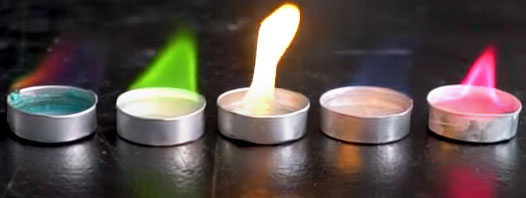Funny Laboratory Accident at a School
I silvery lining of the pandemic was that since many school labs were closed, the science-experiment-gone-wrong stories as well went on hiatus. For two straight years, there were no reported accidents from teacher-led classroom demonstrations—but a few stories of kids doing unsafe things on their ain on TikTok and YouTube.
Only that lull came to an end on April i when a middle schoolhouse teacher in Granbury, Texas, put mitt sanitizer on a 12-yr-one-time student's hands then lit them on burn down, leaving the pupil with third-degree burns. The instructor has since resigned, and the district attorney is deciding whether to seek criminal charges.

Raj Santhappa, Grand.D., will present on the topic of schoolhouse scientific discipline safety at this year's Pittcon in Atlanta, Georgia, June vii-9.
"Putting a combustible substance on bare hands and igniting it is not a scientific discipline experiment. Information technology's just stupid," an aroused parent wrote online. Predictably, school officials claimed the same thing had been done many times earlier, even that 24-hour interval, without incident.
Online commenters lamented the lack of safety training requirements for teachers—as well as the central lack of basic science education requirements—in most states. Currently in Texas, middle schools can hire teachers who have completed only one introductory science course in higher.
Apparently, the hand sanitizer "experiment" was not part of the lesson plan and did not involve administrative review or a thorough risk analysis. Sources told CBS that the incident happened after a class finished a test early and the teacher simply asked students if they wanted to run across something "cool." No i was wearing personal protective equipment.
Due to the obvious chance and liability involved, the light-a-educatee-on-burn experiment is not to be found in any official science curriculum guides for teachers. Nevertheless, a quick cyberspace search turns up dozens of videos of people setting their hands on burn down with booze sanitizer. In a similar incident in 2014, a 23-yr-sometime teacher in Indiana admitted that the idea of lighting students' hands on burn down originated from a YouTube video. That teacher was charged with neglect of a dependent resulting in bodily injury and criminal recklessness.
"Teachers are always looking for ways to brand learning more than fun and become kids hyped for their lessons, merely if your experiment involves setting a kid on fire … there are besides many things that tin get wrong," said a post on the website of the Texas news radio station KTEM.
Some hazards that tin be overlooked include boosted ingredients present in some sanitizers, such as glycerin and aloe, which stick to the pare and make the fuel mixture burn down hotter and longer, like to napalm. Also, student (or teacher) beliefs cannot always be predicted, which creates additional risks.
If the purpose was simply to show that alcohol burns fast, there are hundreds of safer ways to make that betoken. The American Chemical Society and other major scientific discipline and education organizations have collaborated to provide teachers with resources for safer demonstrations and activities in the classroom:
https://constitute.acs.org/lab-safety/education-and-training/high-school-labs.html
Additionally, the Laboratory Safety Institute offers scholarships of upward to $800 for safety educational activity programs, exclusively for Grand-12 teachers, besides every bit presentations on safer science demonstrations for interested teacher groups. LSI'due south founder, Jim Kaufman, has served as an practiced witness in dozens of these cases since 1978.
The Repeating Rainbow
In a science class in Ohio in 2006, 15-year-old Calais Weber received third-degree burns on 48% of her body when her teacher attempted a "rainbow experiment," which uses methanol to light diverse metal salts to produce different-colored flames. To foreclose like tragedies in science classrooms, the U.S. Chemic Prophylactic Board released a video about the incident called "After the Rainbow" in 2013. Less than a month after that video was released, sixteen-year-one-time Alonzo Yanes received disfiguring burns when a teacher in New York attempted the same experiment.

Is making kids say "wow, cool colors" worth all the take a chance?
Four years later, when filmmaker Christina Kallas produced "The Rainbow Experiment," an independent motion-picture show with events that closely mirrored the New York incident, history couldn't stop repeating itself. Fewer than four months after the moving-picture show debuted at the Sundance Moving picture Festival, and despite a prophylactic alert sent to all science teachers in the United States from the American Chemic Club, a teacher in Tennessee decided to perform the rainbow demonstration once more—with the same lack of safety protocols. This fourth dimension, 17 students were hurt.
All totaled, 164 teachers and students have been injured in classroom demonstrations using combustible solvents from 1988 to 2018, according to a study published by the American Chemical Society.
To go along the bicycle from repeating once more, the rainbow experiment is at present banned in New York and by several school districts nationwide. There are safer alternatives to this demonstration, as outlined in the brochure "Rainbow Flame Sit-in Guidelines," available free from the Laboratory Rubber Institute.
Update: On May 17, 2022, a pupil was seriously burned in a science demonstration in Indiana. From initial reports, it seems this was all the same another case of the aforementioned experiment. The rainbow strikes again.
Source: https://www.labsafety.org/teacher-burns-student-ending-two-year-lull-in-school-science-accidents
0 Response to "Funny Laboratory Accident at a School"
Enviar um comentário